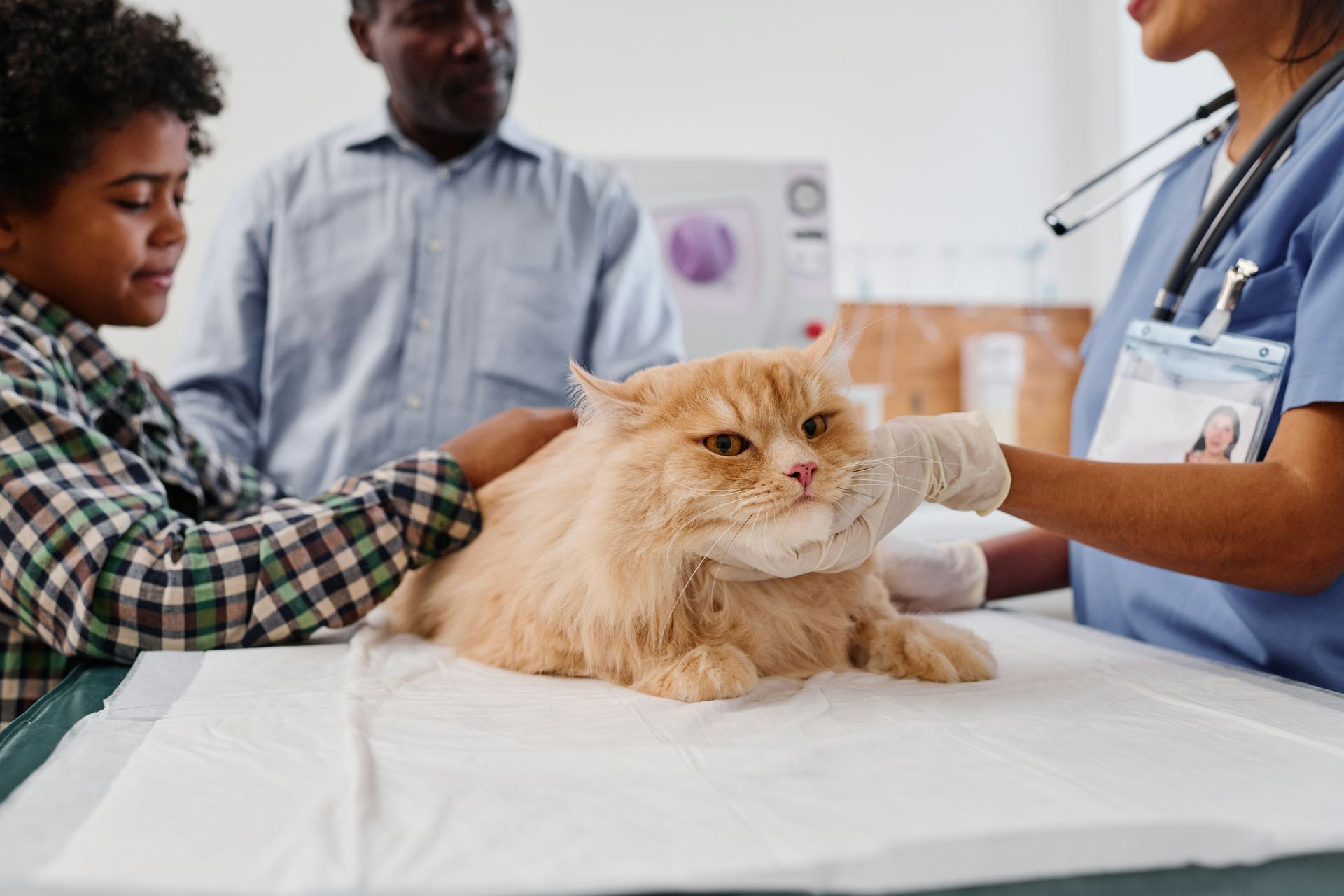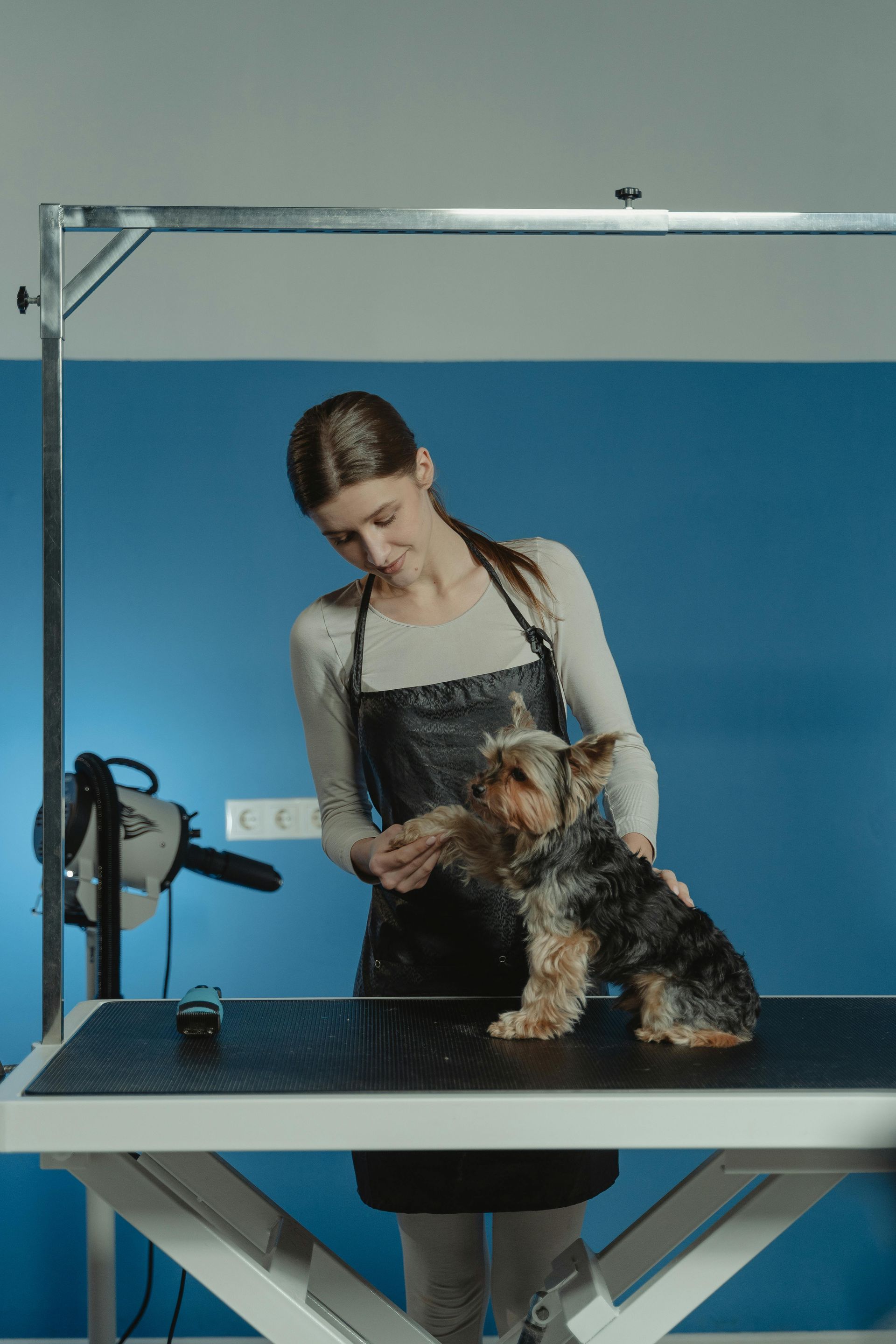Psychology of Pet Parent Price Acceptance in Veterinary Care
Introduction
Let's be honest: talking about money with pet parents isn't anyone's favorite part of veterinary practice. You've spent years perfecting your clinical skills, but when it comes to discussing fees? Well, that's a whole different ballgame.
Here's the thing: your expertise deserves fair compensation, and your practice needs sustainable pricing to deliver quality care. Yet, many veterinary professionals find themselves stuck in a frustrating cycle working harder while profits remain stagnant. Sound familiar?
The truth is, understanding the psychology behind how pet parents perceive and accept pricing changes can transform these difficult conversations into opportunities for strengthening client relationships. It's not about manipulation; it's about effective communication that honors both your professional worth and your clients' emotional investment in their pets.
Throughout this guide, we'll explore the intricate world of veterinary pricing psychology and reveal proven strategies that help you communicate price increases confidently and compassionately.
Understanding the Pet Parent Mindset
The Emotional Investment Factor
Pet parents aren't your typical consumers. They're emotionally invested decision-makers who view their furry companions as family members. This emotional connection creates a unique dynamic that savvy veterinary professionals can leverage positively.
When Fluffy needs surgery, pet parents aren't just making a financial decision; they're making a love-driven choice. This emotional component means that price isn't always the primary concern; value, trust, and perceived care quality often outweigh cost considerations.
However, don't mistake emotional investment for unlimited spending power. Even the most devoted pet parent operates within budget constraints, and unexpected veterinary expenses can create genuine financial stress.

Price Sensitivity Patterns in Veterinary Care
Research shows that pet parent price sensitivity follows predictable patterns:
- Emergency situations: Price sensitivity drops dramatically when pets face immediate health threats
- Preventive care: Higher price sensitivity as services feel "optional"
- Chronic conditions: Moderate sensitivity with focus on long-term value
- Routine procedures: Highest price sensitivity as clients often shop around
Understanding these patterns helps you tailor your communication strategy based on the specific situation you're addressing.
Trust as the Foundation
Before discussing any price increase, remember this fundamental truth: trust trumps price every time. Pet parents who trust their veterinarian's expertise and care recommendations are significantly more likely to accept pricing changes without resistance.
Building this trust foundation requires consistent communication about your reasoning, transparent explanations of treatment benefits, and demonstrable concern for both pet welfare and family finances.
The Science Behind Price Acceptance
Cognitive Biases That Influence Decision-Making
Pet parents, like all consumers, operate under various cognitive biases that influence their price acceptance. Understanding these psychological patterns gives you powerful tools for effective communication.
Anchoring Bias: The first price mentioned sets the "anchor" for all subsequent price discussions. When you need to communicate increases, start with context about industry standards or cost factors before revealing your new pricing.
Loss Aversion: People feel the pain of loss more intensely than the pleasure of equivalent gain. Frame your price communications around what clients gain rather than what they'll lose by delaying treatment.
Social Proof: Pet parents look to others' behavior for guidance. Mentioning that "many of our clients have found this treatment incredibly effective" can increase acceptance rates significantly..
Strategic Timing for Price Increase Communications
Choosing Your Moment Wisely
Timing isn't everything, but it's definitely something crucial when learning how to communicate veterinary price increases to pet owners. The wrong timing can torpedo even the most well-crafted message.
Optimal Timing Scenarios:
- During routine wellness visits when pets are healthy and clients are relaxed
- At the beginning of the appointment before any emotional stress about pet health
- Following successful treatment outcomes when client satisfaction is highest
- During annual contract renewals for services like wellness plans

Timing to Avoid:
- Emergency situations when emotions run high
- Immediately after delivering bad news about pet health
- During busy holiday periods when financial stress peaks
- Right after other local practices have announced increases
The Annual Planning Approach
Many successful veterinary practices implement price adjustments annually, creating predictability for both staff and clients. This approach allows you to:
- Communicate changes well in advance
- Tie increases to specific practice improvements
- Avoid frequent disruptions to client relationships
- Plan adjustments around inflation and cost increases
Crafting Your Message: Communication Strategies That Work
The Value-First Framework
When preparing to communicate price changes, lead with value rather than cost. Here's a proven framework that consistently yields positive results:
1. Start with Appreciation
"We appreciate your trust in our care for [Pet's Name] over the years..."
2. Acknowledge Your Commitment
"Our commitment to providing the highest quality veterinary care continues to guide every decision we make..."
3. Explain the Why
"To maintain this standard of care, we're implementing modest price adjustments that allow us to..."
4. Detail the Benefits
"These changes enable us to offer enhanced services including..."
4. Express Continued Partnership
"We look forward to continuing our partnership in keeping [Pet's Name] healthy and happy..."

Scripts That Actually Work
Here are tested scripts for different scenarios:
For Routine Service Increases: "I wanted to personally let you know about some upcoming changes to our pricing structure, effective [date]. We've carefully evaluated our costs and made selective adjustments to ensure we can continue providing the exceptional care Bella deserves. The adjustment for today's wellness exam reflects our investment in advanced diagnostic equipment and continued education for our team. This means we can detect potential health issues earlier and provide even better preventive care."
For Emergency/Urgent Care: "Given the urgent nature of Max's condition, I want to be completely transparent about treatment costs upfront. Our emergency services reflect the specialized equipment, after-hours staffing, and immediate availability we maintain to handle situations exactly like this. While it's never easy to discuss costs during stressful times, our priority is giving Max the best possible outcome."
Advanced Communication Techniques
The Consultative Approach
Transform pricing conversations from transactional exchanges into consultative partnerships. Instead of simply stating prices, engage clients in collaborative problem-solving.
Ask questions like:
- "What aspects of [Pet's Name]'s care are most important to you?"
- "How can we work together to ensure [Pet's Name] gets the best possible care within your comfort zone?"
- "Would you like me to explain the different treatment options and their associated costs?"
Leveraging Social Proof and Authority
Pet parents respect professional expertise and peer validation. Incorporate these elements naturally:
- "Based on our experience with over 3,000 cases like this..."
- "Many pet parents in similar situations have found..."
- "Our veterinary specialists recommend..."
The Partnership Language Strategy
Frame pricing conversations as partnerships rather than vendor-customer transactions:
- Instead of: "Our prices have increased"
- Say: "We're investing in practice improvements that benefit your pet"
- Instead of: "You'll need to pay more"
- Say: "Together, we're ensuring the best possible care for [Pet's Name]"

Handling Price Objections Like a Pro
Common Objections and Proven Responses
Objection: "Your prices are higher than other veterinary clinics."
Response: "I understand cost is an important consideration. Let me walk you through what's included in our service and how our approach might differ from what you've experienced elsewhere. Many clients find that our comprehensive care approach actually saves money in the long run by preventing costly emergency situations."
Objection: "I can't afford these prices."
Response: "I completely understand, and I want to work with you to find a solution that keeps [Pet's Name] healthy within your budget. Let's discuss payment options and prioritize the most critical aspects of care. We also offer wellness plans that can help spread costs throughout the year."
Objection: "You're just trying to make more money."
Response: "I appreciate your concern, and I want to be transparent about our pricing. These adjustments allow us to maintain the quality of care you've come to expect, including [specific improvements/investments]. Our goal is sustainability so we can continue serving [Pet's Name] for years to come."
The Empathy-First Response Model
When clients express price concerns, follow this sequence:
- Acknowledge: "I understand this is a significant expense..."
- Empathize: "Many pet parents share similar concerns..."
- Educate: "Let me explain what's included..."
- Offer Options: "Here are some ways we can work together..."
Payment Solutions and Flexibility Options
Creating Accessible Care Options
Part of successful price communication involves offering solutions that make quality care accessible. Consider these approaches:
Payment Plans and Financing
- Monthly payment options for expensive procedures
- Third-party financing partnerships (CareCredit, Scratchpay)
- In-house payment plans for trusted clients
Wellness Plan Programs
- Monthly subscription models for routine care
- Bundled service packages at discounted rates
- Predictable budgeting for preventive care
Graduated Service Options
- Essential, standard, and premium care packages
- A la carte service selections
- Emergency fund programs
Profit Solver's Approach to Sustainable Pricing
At Profit Solver, we've helped over 3,700 veterinary hospitals navigate pricing challenges through our proven methodology. Our approach combines powerful software analytics with expert consulting to help practices like yours achieve sustainable profitability while maintaining strong client relationships.
Our Profit Solver Core program helps you analyze the true cost of services, model pricing scenarios, and reach desired profitability levels. This data-driven approach takes the guesswork out of pricing decisions and gives you confidence when communicating changes to clients.
Building Long-term Client Loyalty Through Transparent Pricing
The Transparency Advantage
Transparent pricing communication builds stronger relationships than secretive or apologetic approaches. When you're confident about your value proposition, clients sense that confidence and respond positively.
Key transparency principles include:
- Proactive communication about pricing policies
- Clear explanations of what services include
- Upfront estimates for procedures and treatments
- Regular updates about practice improvements funded by pricing adjustments

Creating Price-Accepting Client Culture
Successfully implementing price increases isn't just about individual conversations. It's about creating a practice culture that naturally supports value-based pricing.
This culture emerges when:
- All staff members understand and can articulate practice value
- Client communication consistently emphasizes quality and outcomes
- Practice improvements are visible and communicated regularly
- Client success stories highlight positive outcomes
Measuring Success and Adjusting Your Approach
Key Performance Indicators for Price Communication
Track these metrics to evaluate your communication effectiveness:
- Client retention rates following price increases
- New client acquisition during pricing adjustment periods
- Average transaction values before and after changes
- Payment plan utilization rates
- Client satisfaction scores related to value perception
Continuous Improvement Strategies
Successful veterinary practices treat price communication as an evolving skill. Regular assessment and refinement ensure continued success.
Consider implementing:
- Staff training updates on communication techniques
- Client feedback surveys about pricing perceptions
- Regular review of payment options and accessibility programs
- Benchmarking against industry standards and local competition
Digital Age Considerations
Leveraging Technology for Better Communication
Modern veterinary practices can use technology to enhance price communication:
- Practice management software for transparent billing
- Client portals with detailed service explanations
- Educational content delivered via email or social media
- Video consultations for discussing treatment options and costs
Online Reputation Management
In today's connected world, how you handle pricing communications affects your online reputation. Positive client experiences with pricing discussions often translate into favorable online reviews that attract new clients.
Frequently Asked Questions
Q: Why do veterinary prices seem so much higher than they used to be?
A: Modern veterinary medicine has evolved dramatically. Today's practices use advanced diagnostic equipment, sophisticated surgical techniques, and specialized medications that weren't available decades ago. Additionally, inflation, increased regulatory requirements, and rising costs for equipment, supplies, and professional education all contribute to pricing changes. The value and outcomes have improved significantly alongside these cost increases.
Q: How do veterinarians determine their pricing structure?
A: Veterinary pricing involves complex calculations including direct costs (medications, supplies), labor expenses (professional time, support staff), facility overhead (equipment, utilities, insurance), and necessary profit margins to sustain operations. Most practices use cost-plus pricing models that ensure fair compensation while remaining competitive in their markets.
Q: Are veterinarians making excessive profits compared to other professions?
A: Actually, veterinary profit margins typically range from 10-15%, which is lower than many other professional service industries. The perception of high profits often stems from not understanding the significant overhead costs involved in operating a modern veterinary facility.
Q: What's the best way to train staff on how to communicate veterinary price increases to pet owners?
A: Role-playing exercises, standardized scripts, and regular team meetings about pricing philosophy work best. Ensure all staff understand the reasoning behind price increases and can confidently discuss value propositions.
Q: Should we mention competitor pricing during these conversations?
A: Generally, avoid direct competitor comparisons. Instead, focus on your unique value proposition and the specific benefits clients receive from your practice.
Q: How do we handle emergency situations where price becomes a barrier to care?
A: Have clear protocols for emergency payment options, including payment plans, financing partnerships, and criteria for compassionate care programs. Train staff to focus first on immediate care needs while sensitively addressing financial concerns.
Conclusion
Learning how to communicate veterinary price increases to pet owners effectively is both an art and a science. It requires understanding psychology, mastering communication techniques, and maintaining genuine empathy for pet parents facing difficult financial decisions.
Remember, successful price communication isn't about convincing clients to pay more. It's about helping them understand the value they receive and making quality care accessible through various payment solutions. When you approach these conversations with confidence, transparency, and genuine concern for both pet welfare and client needs, you'll find that most pet parents respond positively.
The strategies outlined in this guide have helped thousands of veterinary practices navigate pricing challenges while maintaining strong client relationships. By implementing these approaches systematically and refining them based on your specific client base, you'll develop the confidence and skills needed to discuss pricing changes professionally and compassionately.
Your expertise deserves fair compensation, and your clients deserve transparent communication about the value they receive. When you master the psychology of price acceptance and implement proven communication strategies, you create a win-win situation that supports both practice sustainability and excellent patient care.
At Profit Solver, we're committed to helping veterinary practices achieve financial success through strategic pricing and clear communication. Our proven methodologies have helped over 3,700 hospitals optimize their pricing strategies while maintaining the trust and loyalty of their clients. Because ultimately, successful pricing isn't just about numbers. It's about building lasting relationships that benefit everyone involved.



